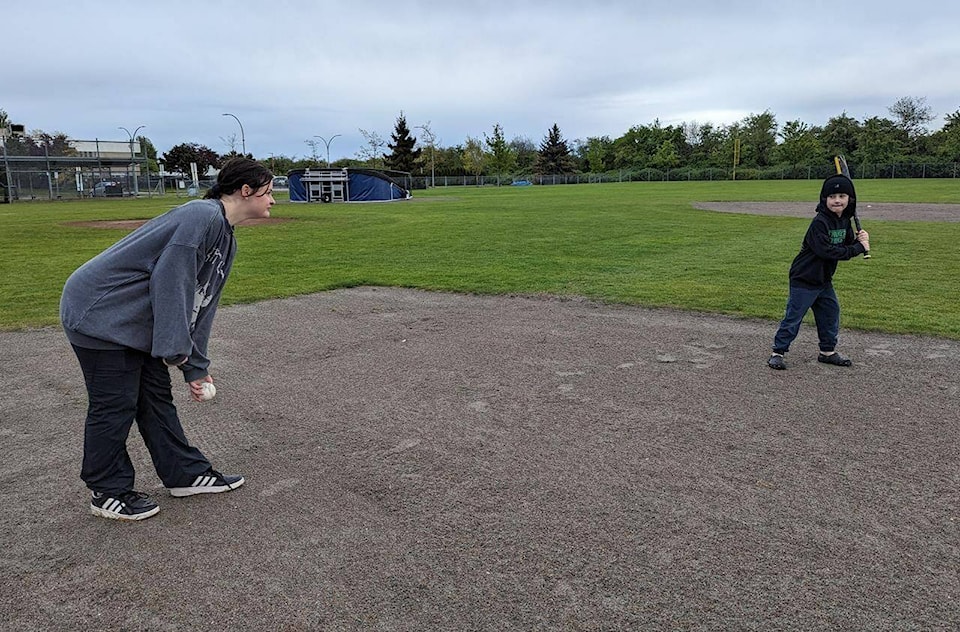Heat waves and poor air quality from wildfires pose extra challenges tochildren and youth who need more exercise outside and less time staring at screens, a new report says.
ParticipAction’s latest report card, released Tuesday, gives Canada’s kids a D+ for overall physical activity. It found that 39 per cent of children between the ages of five and 17 met the recommendation of 60 minutes of moderate to vigorous exercise a day.
The letter grade is a slight improvement from a D in 2022, when COVID-19 pandemic restrictions meant kids lost out on organized sports and school activities.
The non-profit, which ranks children’s fitness levels every two years using mostly Statistics Canada surveys, found that 31 per cent of girls met the physical activity recommendations compared to 57 per cent of boys.
Promoting physical activity among five- to 17-year-olds “is like swimming against the current” because screens keep them sedentary indoors when they could be benefiting from free play and activities outdoors, said lead researcher Mark Tremblay.
“It’s a very tough aspiration in the world in which we live right now, where the built environment is one that is more conducive to being indoors and inactive,” said Tremblay, who is also a senior scientist withan obesity research group at the Children’s Hospital of Eastern Ontario Research Institute in Ottawa.
The report card says heat waves and smoke-filled air lead to cancellations of sports activities and recess, which can make kids more sedentary.
However, while the increasing impact of climate change means kids – especially those with asthma – should switch to indoor activities, those can be too expensive for many families, Tremblay said.
Chris Ridley and Melanie Pringle of Delta, B.C., south of Vancouver, said they prioritize physical activity for their eight-year-old son Aidan Ridley and his 16-year-old sister Ella Pringle.
“We consciously try to get them out,” Pringle said beside a field where their kids were trying out a couple of baseball bats.
While both kids get about 35 minutes of exercisea daywalking to and from school, Aidan plays baseball in a local league and Ella is on the rugby team at school.
But the annual cost of rugby is $400, which is slashed to $250 if parents volunteer – something that Pringle can do only because her job involves shift work, she said.
“Volunteering during school hours, that’s very hard for families,” she said.
When the air quality worsens due to wildfires, the family heads to an indoor pool at a community centre that offers free admission just for high schoolers but Pringle said that should also be the case for elementary students. The ParticipAction report recommends that physical activity be promoted early in life.
There aren’t enough local recreational facilities, which get crowded and charge too much for everything from swimming lessons to skating in the winter, Ridley said.
If the family wants to skate together, the cost can be nearly $30 each time, limiting how often they can participate each week, he said.
“The biggest problem is that kids don’t play together,” said Ridley, adding that’s another downside of addictive devices that keep kids connected electronically while they miss out on physical activity and socializing – just by getting out of the house.
Dr. Melissa Lem, a family doctor and president of the Canadian Association of Physicians for the Environment, said that while climate change can make it challenging for kids to get outside, that should otherwise be the goal because nature provides both physical and mental health benefits.
“We know that exercise outdoors supercharges positive effects. It drops your blood pressure more, it improves your self-esteem more, and we know that’s an issue, especially among adolescents and kids,” she said from Vancouver.
Lem said about 900,000 Canadians have received a “nature prescription” to visit a park or just get outside as part of a program launched by the BC Parks Foundation in November 2020 before it was initiated in every province by June 2022.
Any regulated health professional, including nurses, psychologists and occupational therapists, can participate inthe program. Patients get a customized nature prescription file, and the standard “dose” recommends they spend at least two hours in nature each week, at least 20 minutes at a time.
“The most common pediatric patient I would write a nature prescription for is a kid who gets a lot of screen time and is having mental health or behavioural issues and maybe socially connecting less with other kids,” Lem said. “Most often, it would be a prescription for time outdoors, to spend time with friends outside instead of inside on their phone on their screen.”
The report card gave Canada’s kidsa D- for active play and found that 22 per cent of children and youth spent an average of more than two hours a day engaged in indoor and outdoor unstructured play — something the Canadian Paediatric Society encouraged in its new recommendations earlier this year as part of “risky play” to benefit kids’ physical and mental well-being.
Children and youth got a D in sedentary behaviour because 27 per cent of them met the recreational screen time limit of no more than two hours a day. That’s up from an F given in 2022.
They got a much better grade of B- for sleep, with the finding that 65 per cent of children and youth met age-specific recommendations for the amount of sleep they got: nine to 11 hours every night for five - to 13-year-olds and eight to 10 hours for those aged 14 to 17.
Only four per cent of five- to 17-year-olds met the combined 24-hour movement guidelines when it came to physical activity, sedentary behaviour and sleep, earning them an F — the same as in 2022.
READ ALSO:
READ ALSO:



